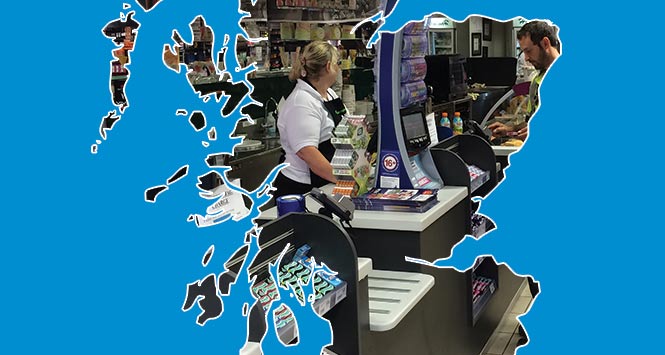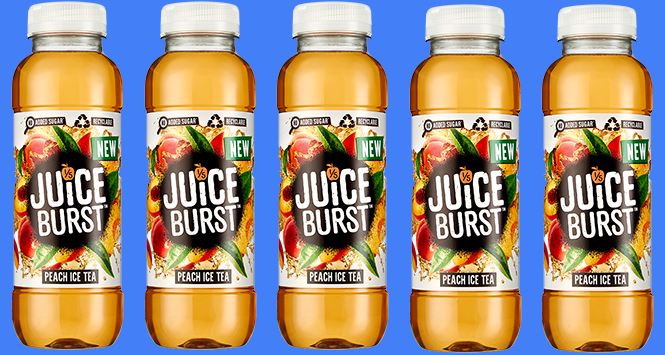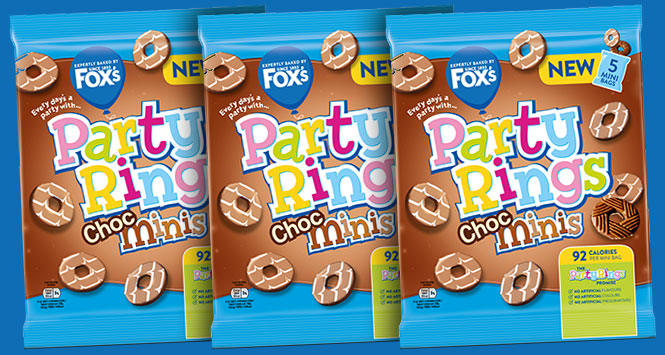A new him! survey has examined convenience trends across the UK, revealing a number of differences between Scottish shoppers and those south of the border, but can retailers use this information to drive better sales?
by Émer O’Toole
With an increasing level of competition across all sectors, it is important to understand how your shop can help differentiate you from the store down the road, or the supermarket round the corner. In short, it pays for retailers to analyse consumer spending habits to improve their store and identify how to drive sales. Interestingly, there are a number of differences between UK shoppers and Scottish shoppers. So, where does the Scottish c-store sector stand in comparison to its UK counterparts? And how can retailers use this information to improve their own offering?
In demographic terms, Scotland has a significantly lower number of shoppers in the affluent ABC1 demographic – 40% compared to the 48% c-store average. Scotland’s c-store shoppers also have the highest unemployment rate at 13% so it is worth offering deals and promotions as well as more entry-level and own-label products across your range. However, remember that all shoppers will be looking for value for money regardless of their income.
To get an accurate profile of Scottish shoppers, it is necessary to look at psychographic areas as well as demographics. This includes consumers’ interests and shopping habits. The life stages of UK shoppers has been split into seven categories by him!: Couples with young children, Retired greys, Child-free couples, Busy providers, At Home Mums, Young free and single and Student. Scotland has a lower proportion of busy providers and couples with young children are arguably the most time-strapped shoppers. With these shoppers under-indexing in Scotland, the Scottish shopper should be more open to impulse sales and disruptive advertising.
One area where the Scottish shopper over index is the newsagent mission (26% compared to the UK average of 22%). In the UK, news and tobacco are the two biggest sales drivers in convenience stores. him!, which compiled the survey based on its own research, recommends retailers encourage shoppers to pick up other items by using cross-category promotions and interruptive merchandising displays. With the recent display ban and forthcoming EUTPD restrictions, it has been tough to adjust to the new way of selling tobacco. However, with an estimated 41% of Scottish shoppers being smokers, a wide range of tobacco and cigarette products need to be available. Scottish smokers prefer 20s over 10s (62% and 21% respectively) so retailers are advised to stock more 20s to help meet their needs.
The top three categories where Scottish shoppers buy the most products are bakery (26%), soft drinks (21%) and milk (20%). Consider making your bakery section more visible and appealing to look at with POS displays and promotions to encourage even more shoppers to this category. A simple way to increase sales of soft drinks is through cross category promotions such as meal deals where shoppers can buy a sandwich, a soft drink and a snack at a reduced price.
Fortunately for c-store owners in Scotland, shoppers spend slightly more on average (£6.42) than the rest of the UK (£6.39). In line with the UK, shoppers in Scotland visit their convenience stores nearly four times on average per week. However, this is a decrease on last year’s frequency. Customer satisfaction must be a priority or the Scottish c-store shopper will continue to shop elsewhere. Him! says higher frequency shoppers “are more likely to be on autopilot (and know the layout of their local store very well).”
“Retailers & suppliers need to work hard to interrupt & inspire the Scotland shopper in order to tempt their impulsive side,” says Katie Littler, Insight & Communications Director, him!. “Get shoppers on the lookout for something different, pre-shop, with promotional leaflets.”
So what can retailers in Scotland do to keep encouraging shoppers to come back? With regards to what drives them to a store, 42% of shoppers in Scotland say friendly and helpful staff are key drivers to choosing a particular store.
In Scotland, 11% of shoppers say a user friendly layout attracts them to their local store. This is a high figure compared to the 5% UK average so consider if your store is laid out as well as it can be – speak to your symbol group, or brand reps if you’re not 100%. Retailers need to ensure their staff have a clear understanding of the products in their store so they are able to provide a highly helpful service since 18% of Scottish shoppers say fast speed of service will drive them to a store (compared to the 12% UK average).
Price is another area to focus on as 27% of Scotland shoppers in Symbol stores say the main driver to that particular store is cheap prices, compared to only 14% of the average UK shopper. With cheap prices being important to the Scotland shopper, retailer signage must effectively communicate low prices. PMPs are another way to offer low prices and reinforce a sense of responsible pricing.
The him! research revealed that 60% of Scotland’s shoppers are of C2DE status. Convenience store shoppers in Scotland are particularly price-conscious in general and therefore a sense of value for money needs to be instilled throughout store to avoid lost sales to larger format stores with bigger ranges of products.
In general, Scotland shoppers are less satisfied compared to shoppers in other regions. him! asked shoppers to rate convenience stores in four categories: value for money, speed of service, product availability and range of products to meet your needs. Scotland shoppers gave the lowest marks in every category, with the lowest being a score of 7.5 out of 10 for value for money. These four factors should be considered to maintain shopper loyalty and to help increase overall shopper satisfaction.





